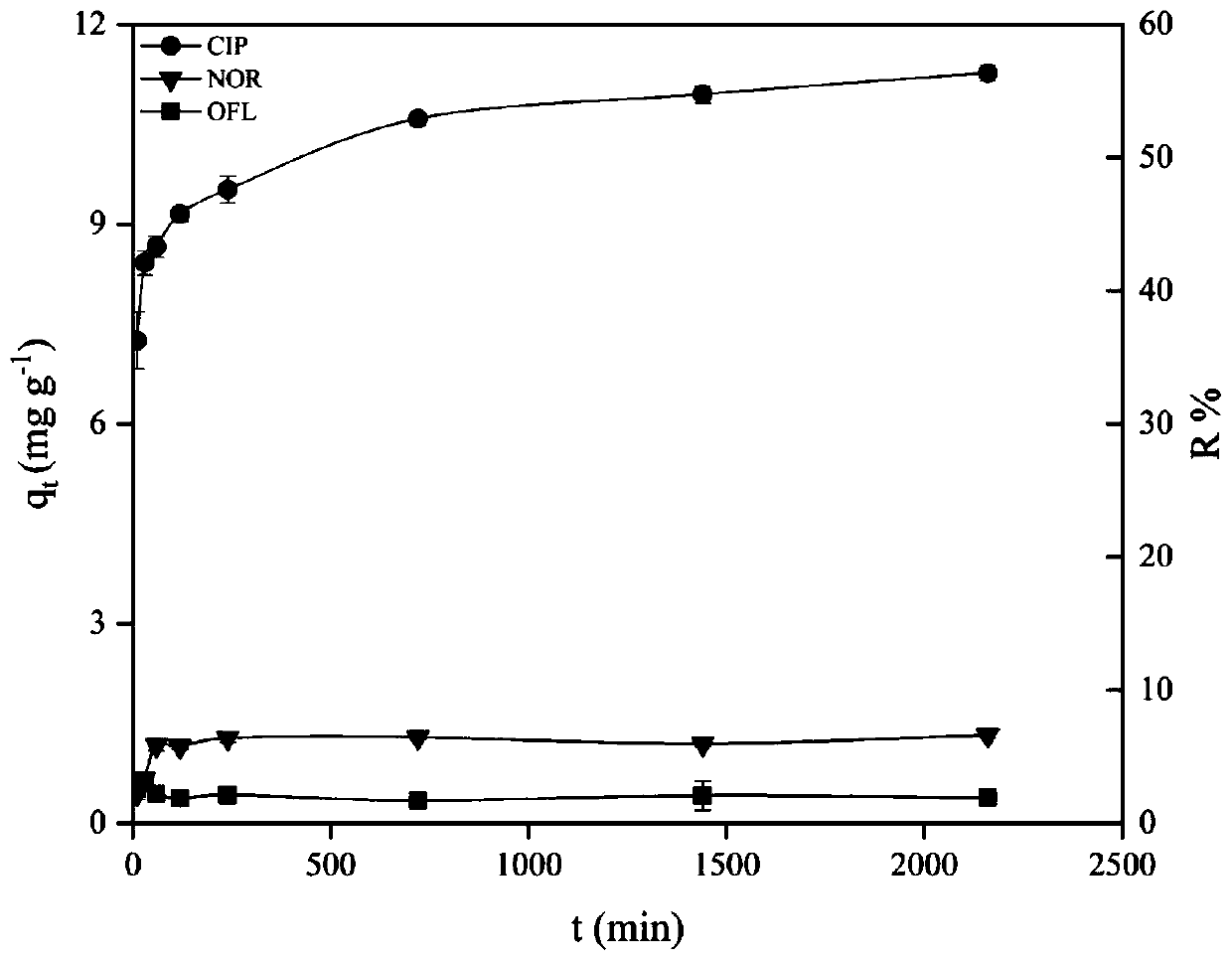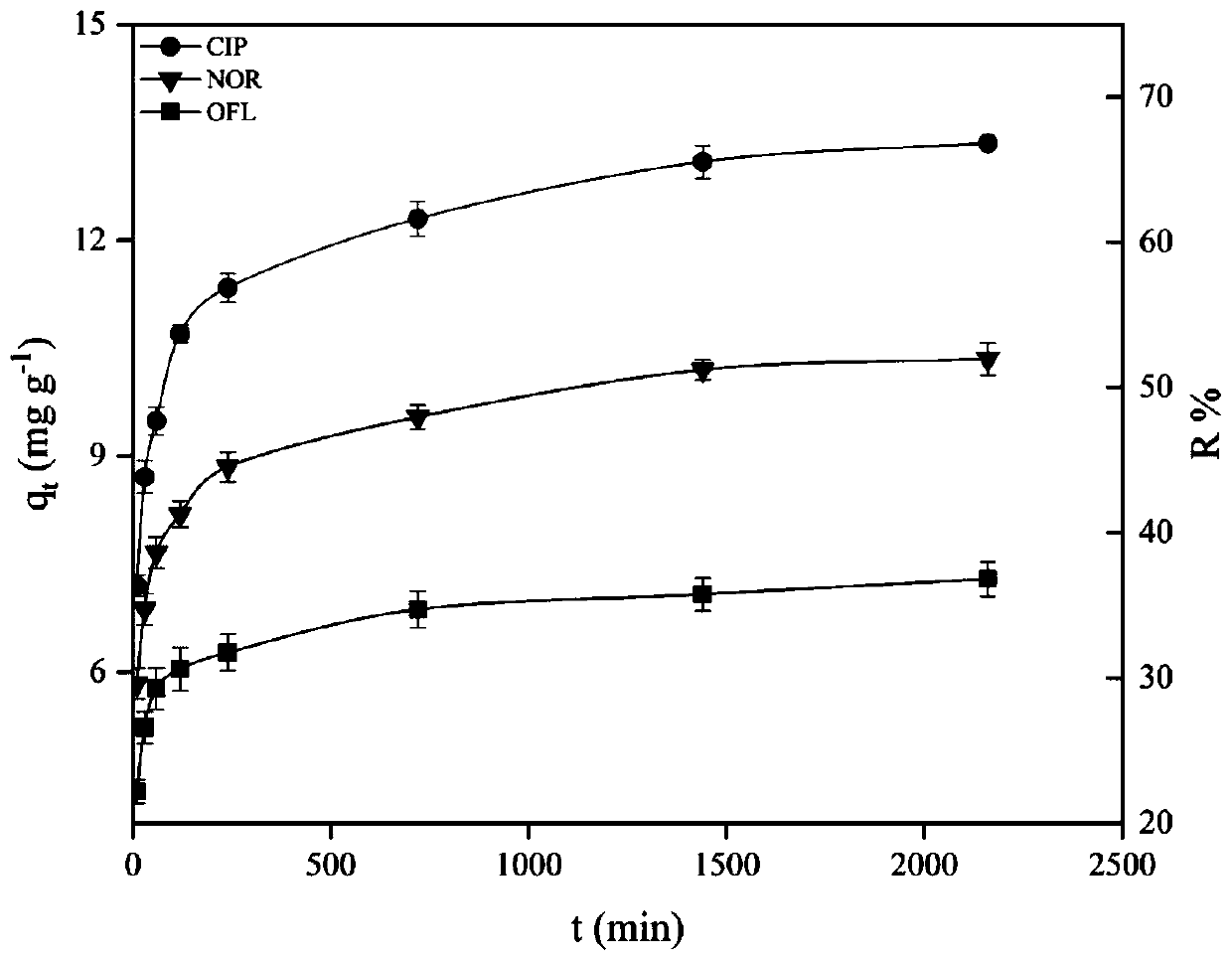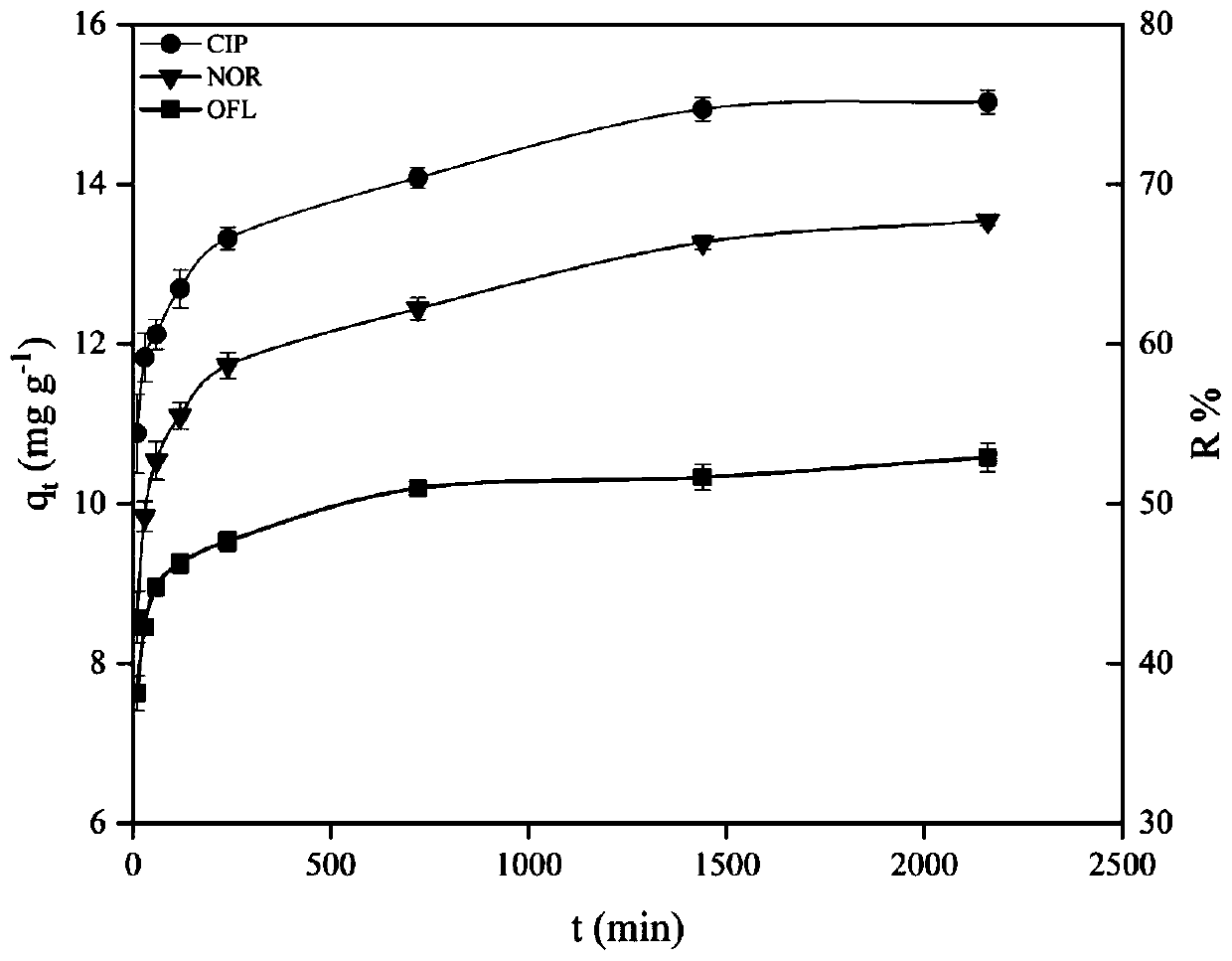Preparation of Fe-Zn and phosphate modified sludge biochar and application of the same in removal of fluoroquinolones antibiotics from water
A technology of fluoroquinolones and biochar, applied in the field of water treatment, can solve problems such as limited adsorption capacity, achieve low cost, simple operation, and achieve the effect of removal
- Summary
- Abstract
- Description
- Claims
- Application Information
AI Technical Summary
Problems solved by technology
Method used
Image
Examples
example 1
[0047] Example 1: Centrifuge and dehydrate the municipal sludge in the secondary sedimentation tank, dry it in a blast drying oven at 70°C to constant weight, grind it, and place it in N 2 Pyrolysis at 500°C for 2h in a tube furnace with a flow rate of 1 L / min and a temperature rise rate of 10°C / min, ground and sieved (0.15mm) to obtain SBC. SBC added with dissolved FeCl 3 ·6H 2 O: ZnCl 2 =3:1 solution for 24 h, 100 ° C drying, repeat the above loading process 3 times to increase the loading capacity of iron and zinc, transfer to a tube furnace and calcined under the above conditions for 2 h, to obtain Fe / Zn-SBC. Add the above Fe / Zn-SBC to H 3 PO 4 Medium (SBC: H 3 PO 4 =1:5) soaked for 10h, placed in a muffle furnace with a temperature rise rate of 10°C / min, activated at 450°C for 1h, washed with deionized water until the pH of the filtrate was constant, dried at 70°C, ground and sieved (0.15 mm), get Fe / Zn+H 3 PO 4 -SBC, stored in a desiccator protected from light. ...
example 2
[0048] Example 2: Add SBC to the antibiotic solution with a concentration of 10mg / L, the dosage of SBC is 0.5g / L, react in a constant temperature shaking box at 25°C, and take samples at the set time to determine the residual of CIP, NOR and OFL Concentration, calculated adsorption capacity and removal rate.
[0049] Depend on figure 1 It can be seen that when SBC is used as an adsorbent, its adsorption capacity for CIP, NOR, and OFL is 0.60-11.27mg / g at reaction equilibrium, and its removal rate is 1.32-55.87%, and its removal ability for CIP is the strongest.
example 3
[0050] Example 3: Fe / Zn-SBC was added to the antibiotic solution with a concentration of 10mg / L, the dosage of Fe / Zn-SBC was 0.5g / L, and the reaction was carried out in a constant temperature shaking box at 25°C, and samples were taken at the set time Determine the residual concentration of CIP, NOR and OFL, and calculate the adsorption capacity and removal rate.
[0051] Depend on figure 2 It can be seen that when Fe / Zn-SBC is used as the adsorbent, the adsorption capacity and removal rate of CIP, NOR, and OFL increase with time, and the adsorption capacity is 7.29-13.35 mg / g when the reaction is balanced, and the removal rate is 36.43-67.81 %, the adsorption capacity was significantly higher than that of SBC, and it had the strongest removal capacity for CIP.
PUM
| Property | Measurement | Unit |
|---|---|---|
| adsorption capacity | aaaaa | aaaaa |
| adsorption capacity | aaaaa | aaaaa |
| adsorption capacity | aaaaa | aaaaa |
Abstract
Description
Claims
Application Information
 Login to View More
Login to View More - R&D
- Intellectual Property
- Life Sciences
- Materials
- Tech Scout
- Unparalleled Data Quality
- Higher Quality Content
- 60% Fewer Hallucinations
Browse by: Latest US Patents, China's latest patents, Technical Efficacy Thesaurus, Application Domain, Technology Topic, Popular Technical Reports.
© 2025 PatSnap. All rights reserved.Legal|Privacy policy|Modern Slavery Act Transparency Statement|Sitemap|About US| Contact US: help@patsnap.com



